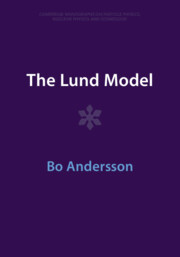
-
- You have access
- Open access
- Cited by 2
-
Cited byCrossref Citations
This Book has been cited by the following publications. This list is generated based on data provided by Crossref.
Zhu, Senjie Huang, Xiao Xia, Lei Guo, Aiqiang Liang, Yutie Zhang, Yifei and Zhao, Yuxiang 2024. Study of charm hadronization and in-medium modification at the Electron-ion Collider in China. Physical Review D, Vol. 109, Issue. 1,
Taya, Hidetoshi Nishimura, Toru and Ohnishi, Akira 2024. Estimation of electric field in intermediate-energy heavy-ion collisions. Physical Review C, Vol. 110, Issue. 1,
- Publisher:
- Cambridge University Press
- Online publication date:
- July 2023
- Print publication year:
- 2023
- Online ISBN:
- 9781009401296
- Creative Commons:
-
This content is Open Access and distributed under the terms of the Creative Commons Attribution licence CC-BY-NC-ND 4.0 https://creativecommons.org/creativelicenses




